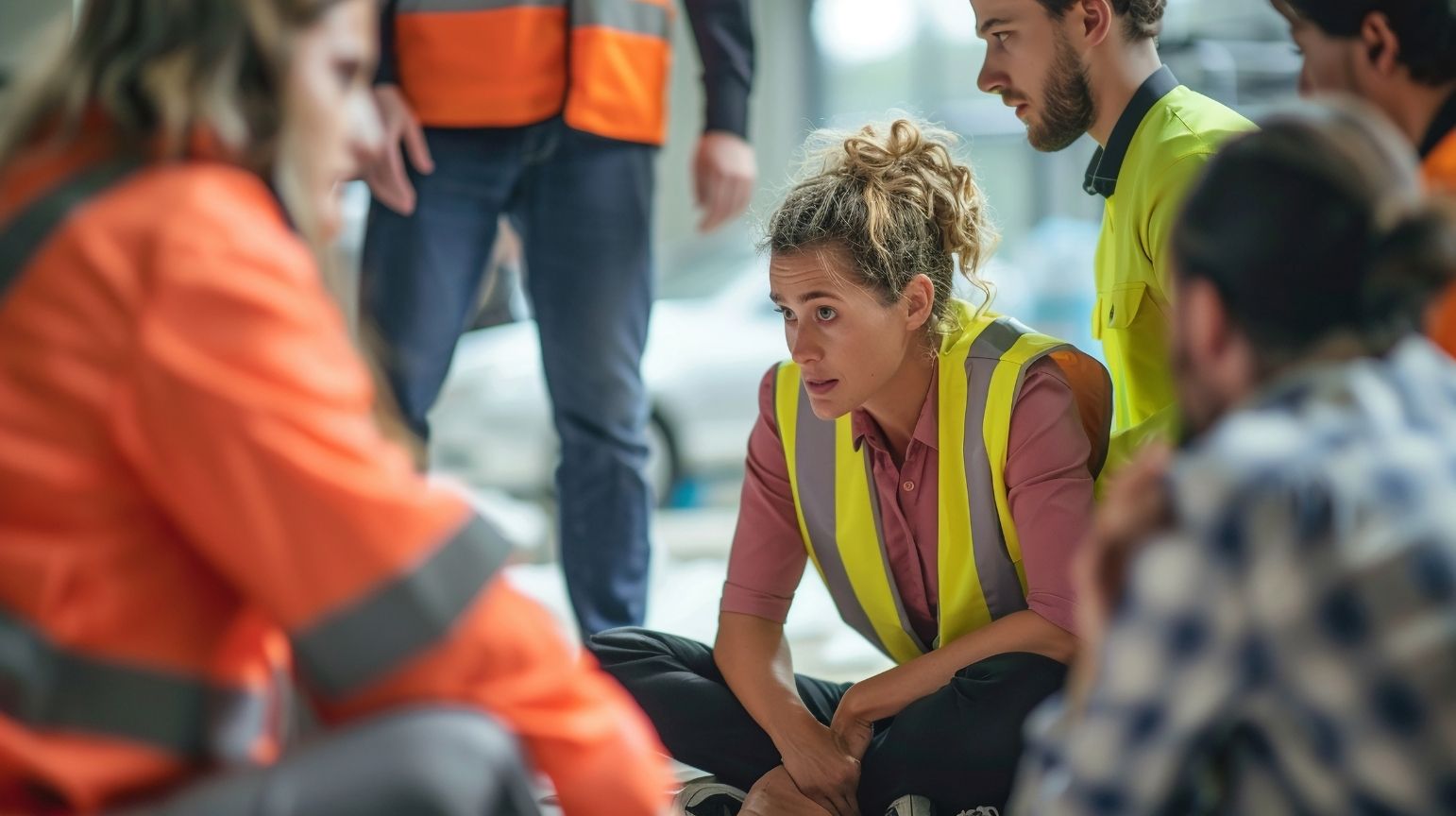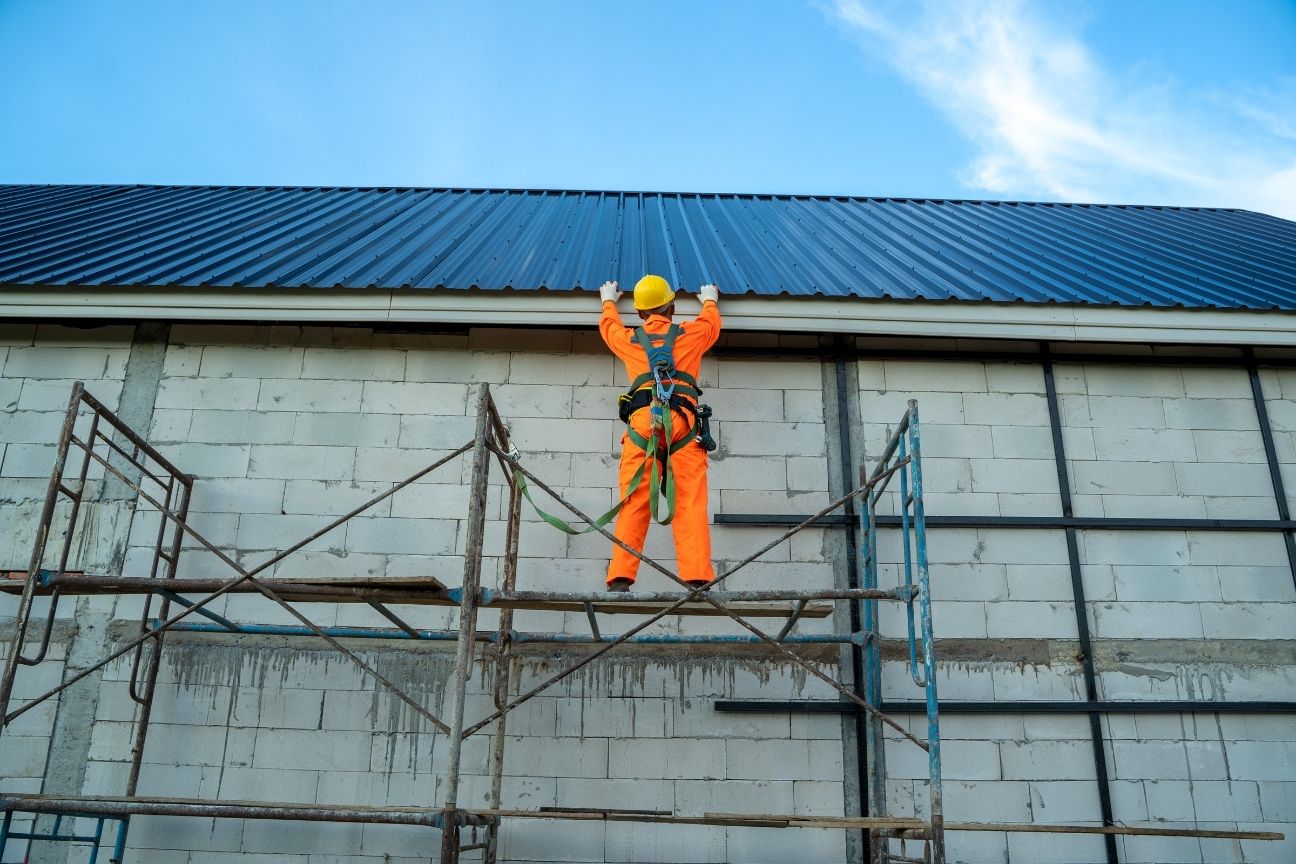Managing industrial waste is no small feat. From regulatory requirements to scheduling logistics, the process can become overwhelming fast. But with the right strategies, you can streamline your waste hauling to save time, money, and resources. In this guide, we’ll dive into effective Quick Waste Hauling Tips that can improve your operations and boost efficiency.
Introduction
Efficient waste hauling is essential for industrial operations. The right approach not only complies with regulations but also saves money and resources. Neglecting this crucial aspect can lead to significant issues, including fines and detrimental environmental impacts.
Industrial waste management involves many components. Understanding these elements is key to an effective waste hauling process. You must identify the types of waste generated, comply with local and federal regulations, and ensure safe disposal practices. This comprehensive overview helps you maintain operational efficiency while adhering to environmental standards.
Streamlined waste hauling methods improve every aspect of waste management. Balancing efficiency, safety, and regulatory compliance can be challenging. However, with proper strategies, you can simplify the process. In this guide, we will provide actionable tips that enhance your industrial waste management efforts.
By keeping operations smooth, companies can focus on their core activities without waste-related distractions. This ultimately leads to greater productivity, lower costs, and a positive environmental footprint. Let’s explore the key aspects of industrial waste management that make an impactful difference.
Understanding Industrial Waste
Industrial waste refers to any material discarded from industrial activities that is not fit for use. This type of waste generates from various sources, including:
- Manufacturing processes
- Construction
- Demolition
- Maintenance
The composition of industrial waste varies widely. It can include harmful substances like chemicals and heavy metals, as well as common recyclables such as cardboard and plastics.
The Implications of Improper Waste Management
Improper handling of industrial waste can lead to severe consequences. Here are some key implications:
Environmental Risks
- Soil and Water Contamination: Chemicals can leach into the environment, threatening ecosystems and public health.
- Wildlife Impact: Pollution can harm local wildlife and disrupt habitats.
Legal and Financial Consequences
- Regulatory Violations: Failing to manage waste properly can lead to hefty fines and legal issues.
- Reputation Damage: Companies risk damaging their public image and customer trust.
Financial Aspects
In addition to legal repercussions, there are significant financial considerations:
- Wasted Resources: Ineffective waste management often results in overspending on disposal.
- Missed Opportunities: Companies may overlook recycling and recovery options, leading to shortages of secondary raw materials.
Importance of Streamlining Waste Hauling
Efficiency in waste hauling is crucial for any industrial operation. When you streamline this process, you unlock a range of benefits that can greatly improve your overall productivity. Let’s break down why optimizing your waste hauling is essential.
Cost Reduction
One of the most immediate benefits of an efficient waste hauling process is cost savings. By reducing the time and resources spent on waste management, your organization can allocate funds to other critical areas. You cut down on transportation costs by optimizing pick-up schedules and routes. Furthermore, fewer raw materials go to waste, translating to direct savings for your bottom line.
Enhanced Safety
A well-organized waste hauling system boosts safety in the workplace. Messy and disorganized waste piles create hazards for employees. Streamlined processes help minimize these risks by ensuring prompt and safe disposal of waste materials. Regular training and awareness programs also contribute to a safer environment, reducing the likelihood of accidents.
Environmental Impact
Streamlining waste hauling isn’t just about profit; it also has significant environmental benefits. Efficient waste management reduces landfill contributions and supports recycling initiatives. When organizations optimize their waste disposal methods, they decrease their carbon footprint. This move towards sustainability can also enhance your brand image, attracting more customers who value responsible practices.
In summary, streamlining your waste hauling process offers tangible benefits like cost reduction, improved safety, and a lower environmental impact. Prioritizing efficiency not only strengthens your operations but also positions your business as a leader in sustainable practices.
Quick Waste Hauling Tips
Streamlining your waste hauling process can revolutionize your entire operation. From enhancing safety to decreasing costs, effective waste management is essential. Here are some quick tips to help you achieve that:
1. Assess Your Waste Stream
First, understand what types of waste your facility generates. Classify your waste into three main categories: recyclable, hazardous, and non-hazardous. This classification helps in determining the appropriate disposal methods. Knowing your waste types will also assist in compliance with regulations.
2. Partner with Reliable Waste Haulers
Choosing the right waste hauler matters. Look for companies with experience in industrial waste management. Evaluate potential partners based on their safety records, customer service, and flexibility. A reliable hauler can become a valuable extension of your team.
3. Optimize Pick-Up Schedules
Timing is crucial in waste hauling. Analyze your production schedules to minimize downtime during pickups. Create a consistent hauling schedule that aligns with your production needs. This strategy will ensure that waste is removed efficiently, keeping your operations running smoothly.
4. Implement Waste Segregation Practices
Segregating waste at the source provides numerous benefits. First, it reduces contamination risks. Second, it helps in maximizing recyclables. Make sure to provide clearly labeled bins for each waste category. Educating your staff on proper segregation practices can dramatically improve your waste management.
5. Utilize Technology for Tracking and Reporting
Invest in software tools that offer real-time tracking of your waste. These technologies allow for better monitoring and reporting, improving overall efficiency. Stay informed on waste volumes, types, and disposal methods. The insights gained from these tools can lead to smarter decision-making.
6. Train Your Workforce
Your employees play a crucial role in waste management. Regular training sessions keep them informed about new practices and compliance requirements. Educate them on the importance of proper waste disposal to prevent contamination. Empower your workforce with knowledge and resources—they are your first line of defense.
7. Evaluate and Adjust Routes
Look closely at your hauling routes. Use data analytics to identify inefficiencies. Consider factors such as traffic patterns, distance, and fuel consumption. By optimizing routes, you can save time and reduce costs. Plus, fewer emissions contribute positively to the environment.
By following these Quick Waste Hauling Tips, you can significantly improve your industrial waste management process. Streamlining your approach not only enhances efficiency but also supports environmental sustainability. Take these steps to make your operations smoother and more effective!
Contaminated Waste Handling
Handling contaminated waste is a critical aspect of industrial waste management. It requires vigilance and structured processes. Failure to manage contaminated waste properly can lead to severe environmental issues and legal complications. Here are some effective strategies for handling contaminated waste safely and efficiently.
1. Understand Contamination Risks
First, identify the most common pollutants found in industrial waste. This could be anything from heavy metals to chemical solvents. Knowing what you’re dealing with is essential. Once you recognize the contaminants, you can take appropriate action. Remember, the ramifications of mishandling contaminated waste can be severe. You might face hefty fines, legal consequences, or even harm to your employees and the environment.
2. Develop a Contaminated Waste Plan
Next, create a detailed contaminated waste management plan. This plan should outline clear protocols for handling and disposing of hazardous materials. Start by evaluating your current processes. What gaps exist in your hazardous waste protocols? Then, develop a step-by-step approach to tackling contaminated waste. A well-documented plan ensures all team members know how to respond to a contamination scenario.
Also, make sure your plan complies with regulatory requirements. Different regions have specific guidelines for handling contaminated waste. Having this documentation not only keeps you compliant but also provides peace of mind. You can feel secure knowing you’re following legal protocols.
3. Employee Training and Awareness
Training your workforce is crucial. Educate your employees about the risks associated with contaminated waste. While training sessions can be time-consuming, they provide immense long-term benefits. Regular training sessions help reduce contamination incidents and boost overall safety. Consider implementing refresher courses annually. This keeps your team informed about the latest regulations and best practices in waste management.
4. Monitor and Adjust Your Processes
Finally, periodically review your contaminated waste handling processes. Analyze past incidents to identify trends or areas for improvement. Make adjustments to your methods based on these insights. This will help you tighten your waste management protocols and increase efficiency.
Contaminated waste handling is not just a task—it’s a commitment to safety, compliance, and environmental stewardship. By addressing contamination risks, developing a solid plan, training your workforce, and regularly refining your processes, your organization can significantly reduce the risks associated with contaminated waste and improve overall waste management efficiency.
Enhancing Industrial Waste Efficiency
Streamlining your industrial waste hauling isn’t just about cutting costs; it’s also about boosting efficiency and making a positive impact on the environment. Focusing on a few key areas can significantly enhance your waste management process. Here are some effective strategies to consider.
Review Recycling Options
Exploring local recycling facilities is crucial. Identify which materials can be recycled in your area. This not only helps reduce landfill waste but also can bring financial incentives through recycling programs. Long-term, recycling industrial materials can lower disposal costs and enhance your company’s reputation as an environmentally responsible business.
Engage with local recycling initiatives to stay updated on best practices and available resources. Regularly assess your recyclable stream to ensure you capture as much material as possible. This proactive approach can lead to substantial savings and contribute to a cleaner environment.
Invest in Efficient Containers
The type of containers you use for waste collection can significantly impact your efficiency. Invest in durable, clearly labeled bins for different types of waste. For example, use separate containers for hazardous materials, recyclables, and general waste. This segregation minimizes contamination and simplifies the hauling process.
Proper maintenance of these containers is essential. Regular inspections can prevent leaks and spills, ensuring the safety of your workplace. Additionally, training employees on the importance of correct disposal practices reinforces good habits and helps maintain a clean and efficient waste management system.
Audit Your Waste Management Process Regularly
Conducting routine audits of your waste management process is important. This practice allows you to assess what’s working and what isn’t. Look at metrics such as waste volume, disposal costs, and recycling rates. Determine if there are areas where waste can be reduced.
To effectively evaluate your process, gather data on your waste generation patterns. Identify trends and adjust your strategies accordingly. Regular audits not only help maintain efficiency but also provide insights that support continuous improvement.
Set Clear Goals
Lastly, establishing clear, achievable goals for waste reduction is vital. Aim for specific targets, such as reducing total waste by a certain percentage within a year or increasing recycling rates. Track your progress against these goals regularly.
Setting and meeting waste reduction goals fosters a culture of accountability within your organization. It encourages employees to engage with waste management practices actively. Furthermore, it can help create a motivated team focused on achieving sustainability objectives.
By implementing these strategies, you can greatly enhance the efficiency of your industrial waste hauling process. Taking steps to review recycling options, invest in proper containers, conduct audits, and set clear goals can lead to impressive results. Your business will not only benefit financially but also contribute positively to the environment.
Case Studies of Successful Waste Hauling
Streamlining waste hauling isn’t just a theoretical approach; many companies have successfully implemented innovative practices. Let’s explore some real-world examples that showcase the impact of these strategies.
Company A: A Manufacturing Leader
Company A faced significant waste management challenges. They dealt with large volumes of hazardous waste, leading to compliance issues and high disposal costs. By partnering with an experienced waste hauler, they implemented an optimized pick-up schedule based on production needs.
Results
- Cost Savings: Reduced disposal fees by 30% within the first year.
- Safety Improvement: Decreased workplace accidents related to waste handling by 40%.
- Compliance: Achieved a 100% compliance rate with regulatory standards.
Their experience emphasizes how important it is to choose the right waste handler and plan appropriately.
Company B: An Automotive Manufacturer
Company B focused on improving its recycling efforts. They segregated waste at the source, allowing them to identify recyclable materials more effectively. By training their workforce on proper waste management practices, they reduced contamination levels significantly.
Results
- Increased Recycling Rates: Boosted recycling rates from 20% to 60% in just two years.
- Environmental Impact: Lowered landfill contributions, reducing their carbon footprint.
- Employee Engagement: Improved worker morale due to their active role in sustainability.
Their commitment to training and education proves that workforce involvement is key to successful waste management.
Company C: A Food Processing Plant
Company C tackled contaminated waste management by creating a detailed contamination risk plan. This proactive approach helped them ensure the safe handling of hazardous materials. They utilized technology to monitor and report waste levels, thereby refining their operations.
Results
- Efficiency Gains: Reduced waste processing time by 35%.
- Regulatory Compliance: Maintained compliance with all food safety regulations.
- Cost Reduction: Achieved a 25% decrease in overall waste management costs.
By leveraging technology and developing a strategic plan, Company C enhanced not only safety but also operational efficiency.
Conclusion
In this guide, we’ve explored crucial Quick Waste Hauling Tips to elevate your industrial waste management. Implementing these insights will streamline your operations and enhance efficiency.
First, always start with a comprehensive assessment of your waste stream. Identify the types of waste generated in your facility. Classifying them into recyclable, hazardous, and non-hazardous categories will drastically improve your management process.
Next, don’t underestimate the power of a reliable waste hauler. Partnering with an experienced company ensures your waste is handled properly, compliant with regulations, and collected on time. You can focus on production while they handle the details.
Optimizing pick-up schedules is another key step. Aligning your waste collection with production schedules minimizes downtime and interruptions. Consistency in haul schedules enhances predictability and efficiency.
Waste segregation practices should also be a priority. Separating waste at the source can prevent contamination and adhere to regulatory standards. Establish straightforward methods for sorting and disposing of different waste types.
Finally, remember to continuously evaluate your waste management process. Regular audits and feedback loops help identify areas for improvement. Setting clear goals for waste reduction encourages your team to stay committed.
By implementing these strategies, you can pave the way for a more efficient waste hauling process. Regularly review your practices to ensure they remain effective over time. Adopting a proactive approach benefits not only your company but also the environment and community.
Take action now, and watch the transformation unfold in your waste management practices!







